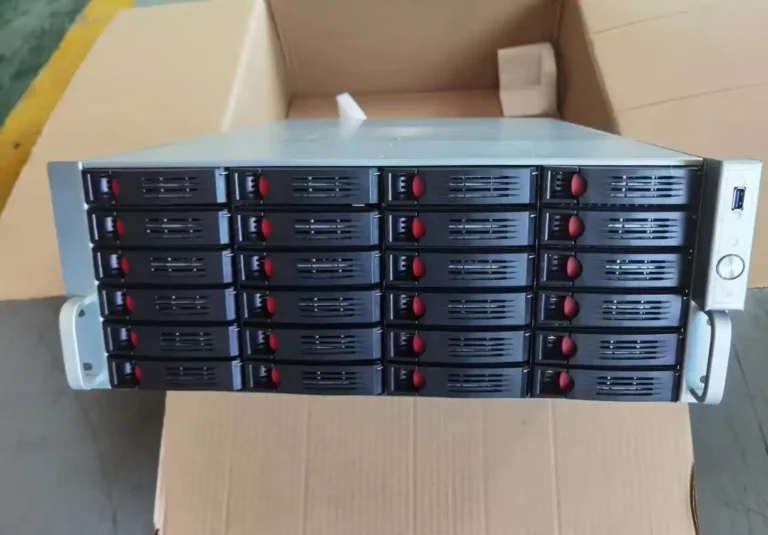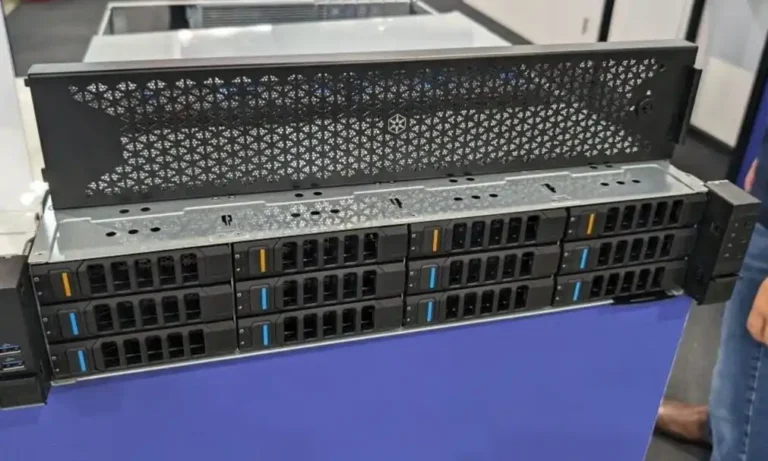You’re building a box that has to move serious heat, push clean lanes, and stay fixable at 2 a.m. That’s what GPU server chassis customization is really about. Let’s argue for it the practical way—by airflow, power, topology, and service. And yes, we’ll ground it with real product families from IStoneCase so you can map ideas to metal.
GPU Server Case
When folks say GPU Server Case, they usually mean a rackmount shell that keeps hot cards cool and happy under load. Air moves front-to-back, fans form a wind wall, and a tight thermal budget keeps clocks up. Don’t treat this like a pretty computer case server project. Treat it like a moving tunnel for CFM.
Position: lock airflow first, density second.
Why: if your wind path chokes, temps spike, clocks drop, and noise gets wild.
How: use straight ducts, no cable blobs in the path, high-static fans, and a clean service loop for power and data so techs don’t block the wind while swapping parts.
Check the base lineup here: GPU Server Case. It’s the right entry point if you’re deciding fan wall count or intake strategy.
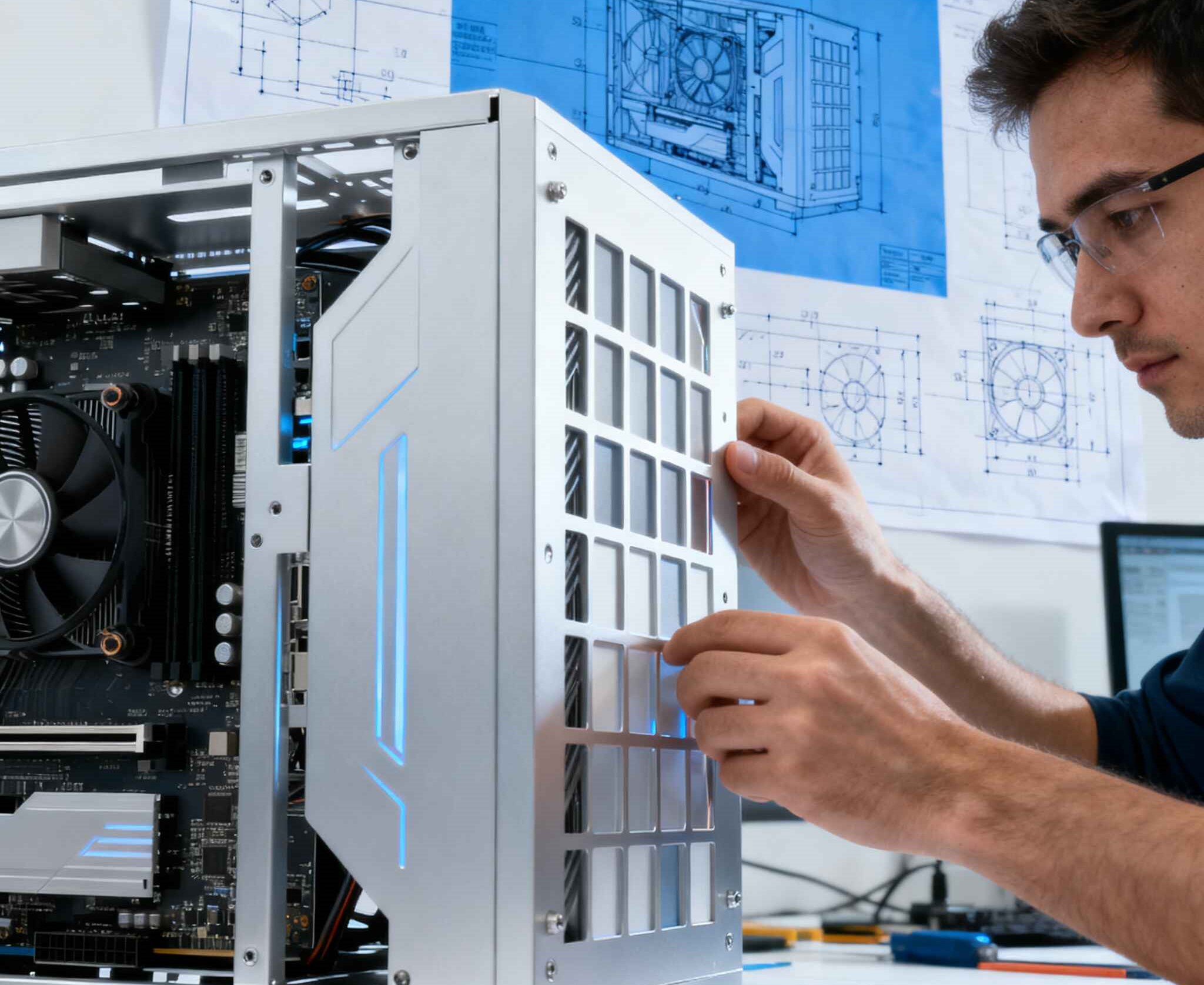
4U GPU Server Case
A 4U GPU Server Case buys you volume. More headroom for fan depth, sleds, and wide-body coolers. It’s the sweet spot for teams who want performance plus sane maintenance.
- Airflow: bigger fans, easier pressure.
- Power: room for redundant PSU and tidy bus bars or heavy cables.
- Service: tool-less fan trays and front filters. You dont want dust living there.
If your use cases are training runs, stable cluster nodes, or mixed infer + ETL, start here: 4U GPU Server Case.
5U GPU Server Case
Go 5U when you’ve got monster accelerators, thick add-in cards, or oddball peripherals that need space. You can push wider GPU spacing (great for triple-slot heat sinks) and still keep the wind path clean.
- Noise: lower fan RPM for the same CFM, so it’s less screamy.
- Cabling: better cable management angles, no brutal 180° bends.
- Topology headroom: more room for backplanes, switch boards, and risers.
Browse builds here: 5U GPU Server Case.
6U GPU Server Case
6U is for edge facilities with tight hot-aisle/cold-aisle rules or labs that swap silicon weekly. You trade rack units for peace of mind.
- Thermal margin: fat ducts, lower pressure drop, calmer acoustics.
- Technician time: everything reachable; less “pull three cards to reach one.”
- Future-proof: easy to add NVMe bays, extra NICs, or a second backplane.
If you need that comfort zone, see: 6U GPU Server Case.
ISC GPU Server Case WS04A2
ISC GPU Server Case WS04A2 is your practical 4U workhorse. It keeps the airflow straight, packs power cleanly, and stays friendly to hands.
- PCIe lanes: design for x16 per GPU where the platform allows. Don’t starve cards with x4 just to hit “more slots.”
- Fan wall: front pressure + mid-plane sealing = happy temps.
- Ops note: filters pop out from the front; swap and go. Easy.
Details: ISC GPU Server Case WS04A2.
ISC GPU Server CaseWS06A
Need breathing room? ISC GPU Server CaseWS06A (6U) gives you it. Great when you’ve got wider coolers, funky cabling, or those long accelerator boards that hate tight bends.
- Power runway: generous PSU bay for redundant units.
- Serviceability: fans, cages, rails—fast out, fast in. Is simple, and is good.
- Scale: more space for 200/400 GbE NICs without coughing the airflow.
See it here: ISC GPU Server CaseWS06A.
Customization Server Chassis Service
This is where the real gains land. Customization Server Chassis Service lets you tune the case to your cards, racks, and ops rules.
- Front panel & I/O: put ports and LEDs where techs actually look.
- Air kit: tailor ducts, fan size, and shrouds to your GPU stack.
- Branding & logistics: silkscreen, labels, cartons; batch buys that don’t jam your warehouse.
- Compliance: electrical safety, materials, rack rails, all buttoned up.
Start that spec here: Customization Server Chassis Service.
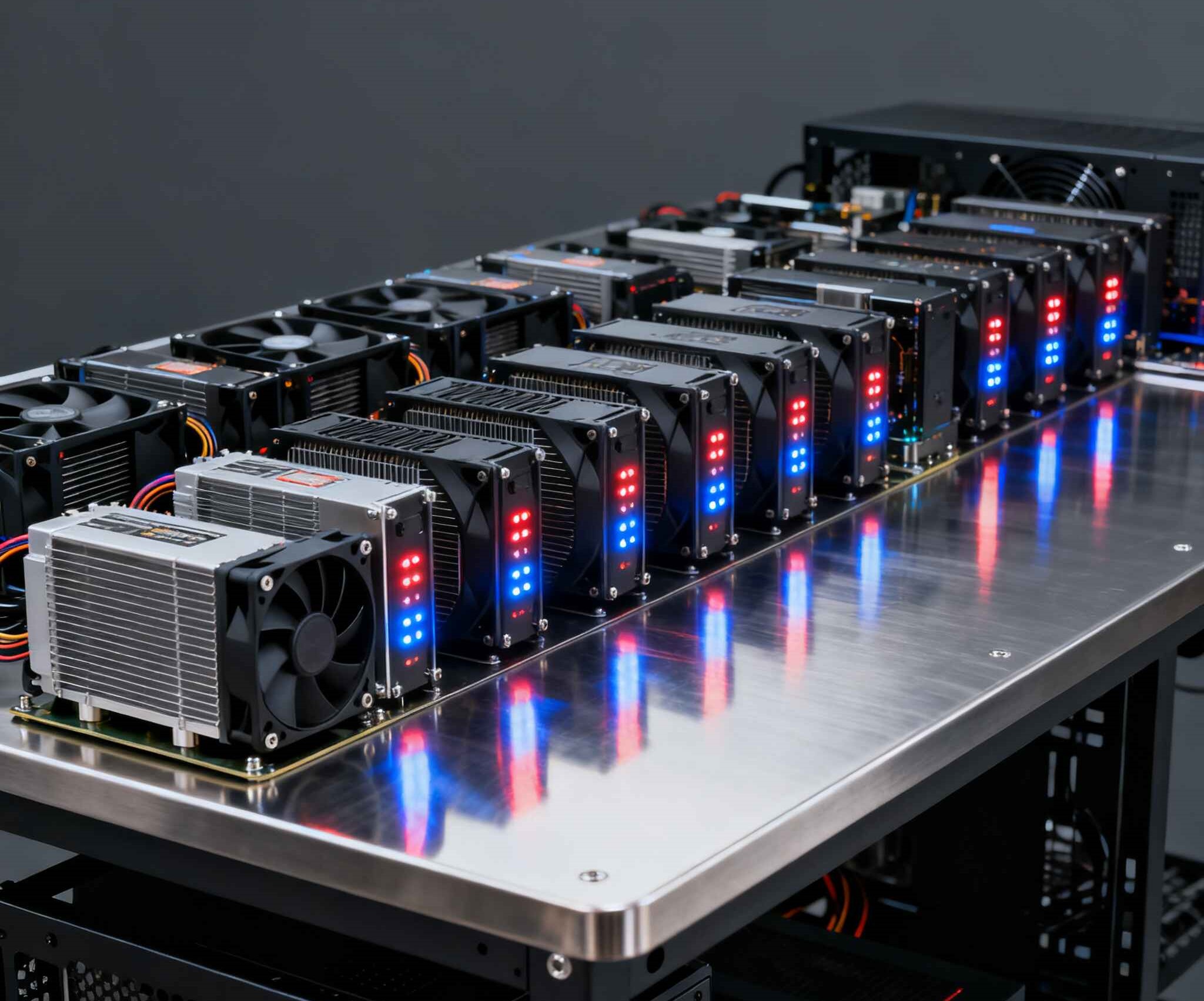
Argument Table (quick view you can paste into a brief)
| Argument | Why it matters | Practical tip | IStoneCase fit |
|---|---|---|---|
| Airflow first, density second | Stable clocks > peak slot count | Seal gaps; keep a straight duct; remove cable bulks from wind path | GPU Server Case, 4U GPU Server Case |
| Power with headroom | Spikes happen; PSUs shouldn’t trip | Redundant PSU; short, secure power runs; no cables flapping into fans | ISC GPU Server Case WS04A2 |
| Keep x16 per GPU where possible | Starved lanes sink throughput | Plan PCIe topology early; use proper risers/backplanes | 5U GPU Server Case |
| Serviceability saves real money | MTTR eats uptime | Hot-swap fans; front filters; easy rail kits | 6U GPU Server Case |
| Plan NIC bandwidth sanely | Don’t overspend on blocked pipes | Match 200/400 GbE to PCIe gen; avoid internal bottlenecks | Customization Server Chassis Service |
Use cases (what this looks like day-to-day)
- AI training rigs: You’re stacking 4–8 accelerators and slamming them 24/7. A tuned 4U with a sealed fan wall often wins. Why? Quicker service, strong static pressure, and decent noise. If you need wider coolers or funky risers, jump to 5U.
- Inference at scale: Cards sip less but you deploy many nodes. Go for consistent server rack pc case layouts. Same rail kits, same airflow, same filter routine. Your ops crew will thank you later, promise.
- Edge analytics: Short racks, mixed temps, local dust. 6U shines because slower fans can still push enough air; techs can yank a sled without domino-tearing the whole node.
- HPC/Research: Teams swap cards and mezzanines weekly. You’ll want clean service loops, generous lid clearance, and front-accessible filters. A server pc case that’s easy to open beats a tight box every time.
- Enterprise dev clusters: Half compute, half storage. Make sure your ATX server case or E-ATX backplane doesn’t pinch airflow near the drive cage. Balance intake area vs. bay count.
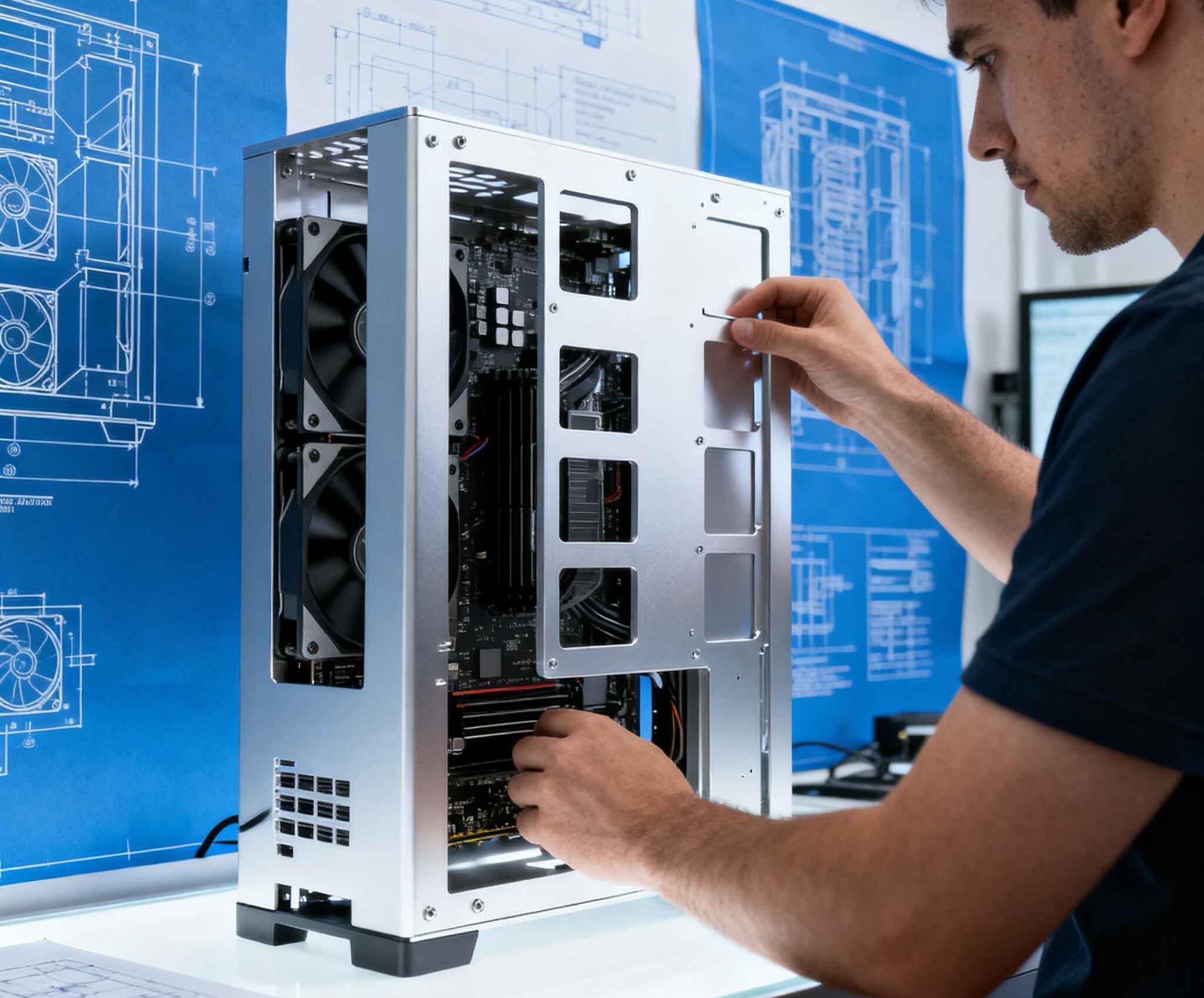
Keywords that buyers actually type (and what we mean)
- server rack pc case: a rackmount enclosure that’s ready for rails, PDUs, and real airflow—not a desktop shell.
- server pc case: similar idea but often used by SMBs moving from tower to rack.
- computer case server: crossover term; if you see it, steer the buyer toward proper rack depth, fan walls, and PSU redundancy.
- atx server case: board form factor matters, but make sure PCIe slot layout and lane bifurcation really match your GPU plan.
You can route them to the main category and let them branch out: GPU Server Case.
Why customization pays off (no vague hype, just shop talk)
- Thermal headroom = uptime. A chassis that’s tuned to your GPU spacing and cooler type keeps boost clocks longer. That means fewer throttling events and smoother jobs.
- Topology discipline = throughput. If you plan the PCIe map first—x16 where it counts—you avoid the awkward “why is this node slow” postmortem.
- Service-friendly = happy weekends. Hot-swap fans, front filters, decent rails, and simple latches save hours per quarter. It’s small stuff that compounds.
- Consistency = scale. Standardize SKUs across racks. Your firmware notes, spare parts, and playbooks get cleaner.
IStoneCase leans into this: design reviews, airflow kits, custom front panels, and OEM/ODM batches that line up with your datacenter rules. We don’t toss you a shell; we align it with your cards, racks, and crew.
Quick buyer checklist (print it, scribble on it)
- Air path: front-to-back, sealed ducts, no cable dams.
- Fan plan: count, size, static pressure, hot-swap trays.
- PSU: redundant, right connectors, tidy routing.
- Lanes: target x16 per GPU; pre-plan bifurcation + risers.
- NICs: pick speed that matches PCIe gen; avoid internal choke.
- Service: rails, filters, handles, latch types.
- Fit: rack depth, PDU clearance, KVM room, and the little things.
Closing: pick your path, then tune the metal
If you want max density with sane ops, start with 4U (4U GPU Server Case). Need wider coolers or roomy cable arcs? Step to 5U (5U GPU Server Case). Want the calmest thermals and friendliest swaps? 6U is your friend (6U GPU Server Case). Already know your playbook and just need it built your way? Go straight to Customization Server Chassis Service.
And if you’d like a spec-heavy 4U or a big-air 6U to kick off tests, the ISC GPU Server Case WS04A2 and ISC GPU Server CaseWS06A make solid starting points. We’ll tune the ducts, lanes, and panels so your GPUs run fast and your team sleeps better.


